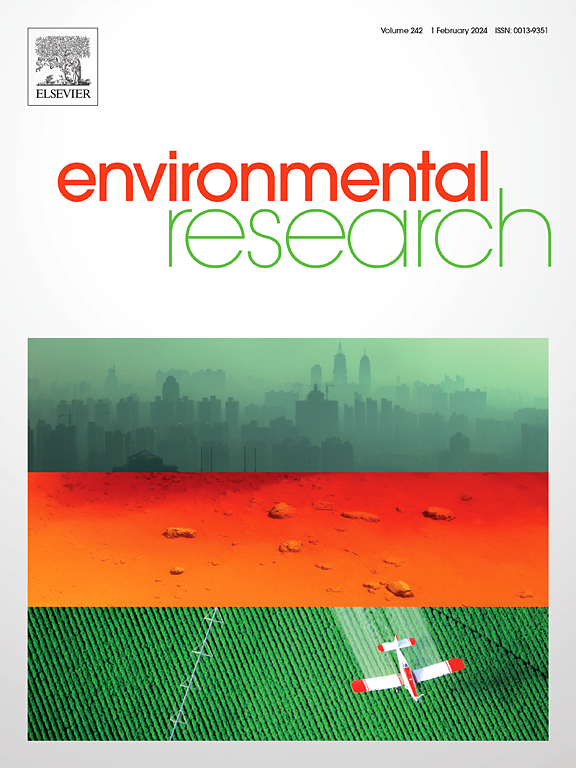Enhanced iodide removal from aqueous solutions using 3D-printed PLA scaffold coated with Cu/Cu2O nanoparticles
IF 7.7
2区 环境科学与生态学
Q1 ENVIRONMENTAL SCIENCES
引用次数: 0
Abstract
In nuclear power plant accidents, radioactive iodine (129I, 131I) can enter the environment, accumulate in the food chain, and pose significant health risks. We developed a novel scaffold using Cu/Cu2O nanoparticles immobilized on a polylactic acid 3D-printed scaffold for efficient iodide removal. The PLA scaffold was fabricated using a fused deposition modeling 3D printer, then surface-modified for enhanced hydrophilicity and functionalized with carboxyl groups via hydrolysis and acrylic acid grafting. Cu/Cu2O nanoparticles were immobilized on the modified surface. The adsorption capacity, determined using the Langmuir model, was 4.85 mg/g, and adsorption kinetics followed a pseudo-second-order model. The iodide removal mechanism was primarily driven by redox reactions between Cu(0), Cu(I) and iodide, leading to the formation of copper iodide (CuI), as confirmed by X-ray diffraction and Raman spectroscopy. Importantly, the Cu/Cu2O scaffold exhibited excellent structural stability during adsorption, with minimal copper leaching (<0.08 mg/L). Characterization of the Cu/Cu2O scaffold using scanning electron microscopy with energy-dispersive spectroscopy and X-ray photoelectron spectroscopy analysis supported these results. The scaffold demonstrated high selectivity for iodide ions even with competing anions. The scaffold maintained its effectiveness across a wide pH range, and continuous column tests separately confirmed its suitability for practical applications in environmental remediation and wastewater treatment systems. In summary, we successfully fabricated a 3D-printed Cu/Cu2O-PLA scaffold, demonstrated its efficient iodide removal performance, and elucidated the underlying redox-driven adsorption mechanism.
使用涂有Cu/Cu2O纳米颗粒的3d打印PLA支架增强水溶液中碘化物的去除。
在核电站事故中,放射性碘(129I、131I)可进入环境,在食物链中积累,对人体健康造成重大危害。我们开发了一种新型支架,将Cu/Cu2O纳米颗粒固定在聚乳酸3d打印支架上,以有效去除碘化物。使用熔融沉积建模3D打印机制作PLA支架,然后进行表面改性以增强亲水性,并通过水解和丙烯酸接枝进行羧基功能化。将Cu/Cu2O纳米颗粒固定在改性表面。Langmuir模型测定的吸附量为4.85 mg/g,吸附动力学服从拟二阶模型。通过x射线衍射和拉曼光谱证实,Cu(0)、Cu(I)和碘化物之间的氧化还原反应是除碘的主要机制,从而形成碘化铜(CuI)。重要的是,Cu/Cu2O支架在吸附过程中表现出优异的结构稳定性,通过扫描电子显微镜与能量色散光谱和x射线光电子能谱分析支持了这些结果。该支架对碘离子表现出高选择性,即使与阴离子竞争。支架在很宽的pH范围内保持其有效性,连续柱测试分别证实了其在环境修复和废水处理系统中的实际应用的适用性。综上所述,我们成功制备了3d打印的Cu/ cu20 - pla支架,展示了其高效的碘化物去除性能,并阐明了氧化还原驱动的潜在吸附机理。
本文章由计算机程序翻译,如有差异,请以英文原文为准。
求助全文
约1分钟内获得全文
求助全文
来源期刊

Environmental Research
环境科学-公共卫生、环境卫生与职业卫生
CiteScore
12.60
自引率
8.40%
发文量
2480
审稿时长
4.7 months
期刊介绍:
The Environmental Research journal presents a broad range of interdisciplinary research, focused on addressing worldwide environmental concerns and featuring innovative findings. Our publication strives to explore relevant anthropogenic issues across various environmental sectors, showcasing practical applications in real-life settings.
 求助内容:
求助内容: 应助结果提醒方式:
应助结果提醒方式:


